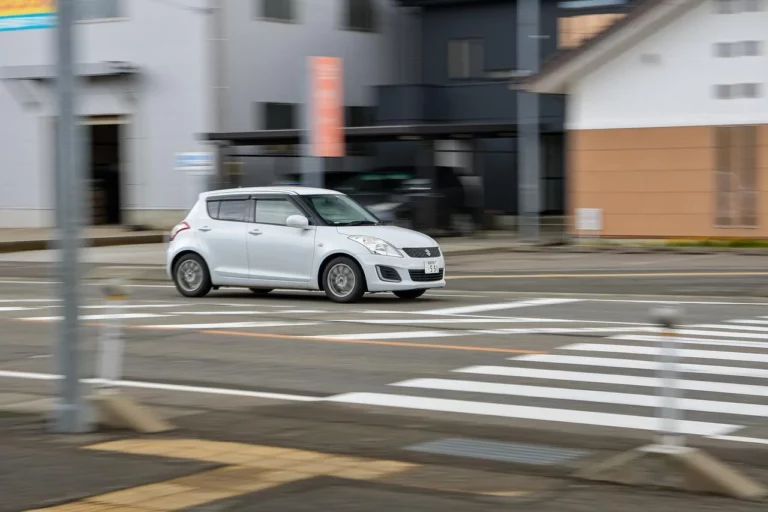Pedestrian Accident Lawyer Jupiter

In Jupiter, pedestrians are at a higher risk of serious injury when drivers fail to yield the right of way or drive recklessly. If you’ve been injured while walking, it’s important to know your legal options. Weston & Pape provides legal representation for victims of pedestrian accidents, fighting to get you the compensation you need for medical expenses, lost wages, and more. Contact a dedicated pedestrian accident lawyer today at 561-821-3898 to schedule your free consultation.
How to Prove Driver Fatigue in a Pedestrian Accident Claim
Pedestrian accidents can result in serious injuries or even death. When a pedestrian is struck by a vehicle, the circumstances surrounding the accident play a major role in determining liability. One factor that can contribute significantly to an accident is driver fatigue. Proving that a driver was fatigued at the time of the accident is crucial, especially in a personal injury claim, as it may help establish negligence and increase the chances of a successful outcome.
Driver fatigue is often difficult to prove, but it is not impossible. If you or a loved one has been involved in a pedestrian accident where fatigue might have played a role, understanding how to build a case around it can be essential in pursuing compensation.
What is Driver Fatigue and How Does It Affect Driving?
Driver fatigue occurs when a driver is too tired or drowsy to operate their vehicle safely. Fatigue can be caused by a number of factors, including lack of sleep, long hours on the road, or driving during irregular hours. When drivers are fatigued, their ability to concentrate, react quickly, and make sound decisions is impaired. This can lead to slower reaction times, decreased awareness of surroundings, and poor judgment, all of which increase the risk of an accident, especially when pedestrians are involved.
Fatigued drivers may fail to notice pedestrians crossing the street, misjudge stopping distances, or fail to yield the right of way. As a result, pedestrian accidents involving tired drivers often result in severe injuries, as pedestrians are vulnerable to collisions with motor vehicles.
Why Proving Driver Fatigue is Important in Pedestrian Accident Cases
In a personal injury case involving a pedestrian, proving driver fatigue can be crucial because it helps establish the driver’s negligence. To win a pedestrian accident claim, the injured party must show that the driver acted carelessly or recklessly. Driver fatigue is a form of negligence because it demonstrates that the driver was not fully alert and did not take proper precautions when operating the vehicle.
If fatigue is proven, the driver’s responsibility for the accident becomes clearer. In many cases, insurance companies or defendants will try to deny liability, arguing that the accident was caused by other factors, such as weather or pedestrian behavior. Proving driver fatigue can provide the evidence needed to strengthen your case and counter these defenses.
Key Evidence to Prove Driver Fatigue in a Pedestrian Accident Case
Proving that a driver was fatigued requires gathering the right evidence. While this can be challenging, there are several sources of evidence that can be used to support your claim:
Eyewitness Testimony
One of the most helpful types of evidence in a pedestrian accident case is eyewitness testimony. Witnesses who saw the accident occur or observed the driver’s behavior before and after the incident can provide valuable insight. If a witness noticed the driver swerving, drifting in and out of lanes, or showing signs of drowsiness, this could support the claim that fatigue was a factor.
Driver’s Driving Logs
If the driver involved in the accident is a commercial driver, such as a truck driver, their driving logs may provide critical evidence of fatigue. Federal law requires commercial drivers to keep detailed records of their driving hours and rest periods. These logs can show whether the driver exceeded the legal driving hours or failed to take adequate rest breaks, both of which can be used to prove fatigue.
The Driver’s Statements
Statements made by the driver involved in the accident can be valuable. In some cases, the driver may admit to being tired or feeling fatigued at the time of the accident. This can happen in police reports or during conversations with investigators or insurance representatives. If the driver acknowledges their fatigue, this can be a powerful piece of evidence to use in your case.
Accident Scene Investigation
A thorough investigation of the accident scene can provide clues that suggest the driver was fatigued. For example, skid marks, erratic driving patterns, or damage to the vehicle may point to a lack of control, which can be linked to drowsiness. Additionally, the time of day and location of the accident can help determine whether the driver had been driving for an extended period without rest.
Black Box Data
Many vehicles, particularly commercial trucks, are equipped with black boxes (Event Data Recorders). These devices track various aspects of vehicle performance, including speed, braking, and acceleration patterns. In cases involving truck accidents, black box data can show if the driver was braking late or swerving, which may indicate fatigue-related impairment.
Medical Records
Medical records from the driver or the victim may provide relevant information. For example, if the driver had a history of sleep disorders, such as sleep apnea, it could suggest a higher risk of drowsiness or fatigue while driving. Similarly, medical records showing injuries related to fatigue-induced accidents (e.g., head-on collisions caused by drifting) can support the claim.
Surveillance Video
If the accident occurred near a business or residential area, there may be surveillance footage that captures the accident or the driver’s behavior prior to the incident. Security cameras may reveal the driver’s actions leading up to the accident, such as erratic driving, slow reaction times, or a failure to stop for pedestrians.
Police Reports
Police reports often contain important details about the accident, including witness statements, the officer’s observations, and any citations issued to the driver. If the officer noted signs of driver fatigue, such as bloodshot eyes or erratic driving, this information could be pivotal in proving that the driver was fatigued.
Challenges in Proving Driver Fatigue
Proving driver fatigue in a pedestrian accident case is not always straightforward. There are a few common challenges that can arise during the process:
- Lack of Direct Evidence: It can be difficult to obtain direct evidence that proves fatigue, such as the driver’s admission or detailed logs. In these cases, indirect evidence, such as eyewitness testimony or accident scene analysis, becomes more important.
- Insurance Defenses: Insurance companies may argue that fatigue was not a contributing factor to the accident or may attempt to shift the blame onto the pedestrian. Having strong evidence is crucial to counter these defenses.
- Privacy Issues: Obtaining medical or driving logs may require permission from the driver or their employer. In some cases, these records may be difficult to access without legal assistance.
Why It’s Important to Consult with a Personal Injury Attorney After a Pedestrian Accident
Being injured as a pedestrian can have a lasting impact on your life. If you were struck by a vehicle in Jupiter, it’s critical to understand your rights and pursue compensation for your injuries. Weston & Pape has experience advocating for pedestrian accident victims and is ready to fight for the compensation you need to recover. Reach out today at 561-821-3898 to speak with a personal injury attorney and arrange your free consultation.

 Call Us Today - It's Free
Call Us Today - It's Free